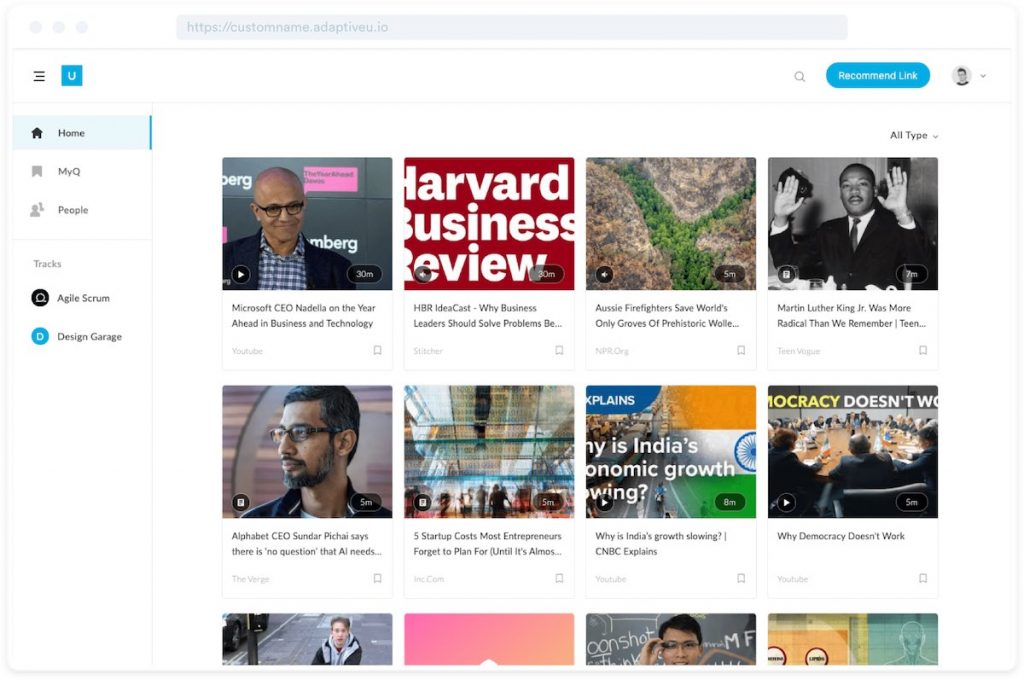There’s a new trend in businesses. It’s slowly progressed from an out-there internal process in new-age start-ups to become a common practice in Fortune 500 companies. I’m talking, of course, about ‘learning time’. And if your company isn’t doing it already, you may be missing out.
It’s no secret that people are staying at jobs for less time. In the US, wage and salary workers have worked for their current employer a median of 4.6 years. But whereas the median tenure for employees age 65 and over is 10.3 years, that falls to just 3.2 years for workers age 25 to 34.
Younger employees feel less tied to a single place of employment. They’re also more likely to consider workplace policies before making a career commitment. They’re equally more likely to leave a workplace – and even change their career – in the pursuit of the perfect workplace.

Learning time – in which part of your workday or week is dedicated to developing new skills – is key to attracting young talent. But what can learning time do for your business?
Embrace bottom-up growth
Your team know your business. They understand the culture and they know your customers. So it only makes sense to look to your team to close knowledge gaps before you start posting job ads. By allowing your team to develop their skills rather than hiring-in, you can improve performance without the added cost.
Studies show internal upskilling is a worthwhile investment. It’s far less expensive to train your existing team than to hire a new employee.
Of course, there are times when you need an expert in a particular field and can’t afford to wait. But by allowing your employees to learn new skills, you can grow your competencies without the cost of hiring from outside.

Cut turnover
It’s no secret; upskill people within your company and they’ll stay with you for longer.
And when an employee leaves, you’re faced with several challenges, including:
- Advertising the role
- Interviewing applicants
- Signing new contracts
That’s before we even get to the work of training a new recruit (more on that later).
Plus, losing experienced workers is a loss for everyone. As a recent CIPD study titled ‘Insights into managing an age-diverse workforce’ argued, by letting go of talented team members, businesses run the risk of losing specialist knowledge and insights.
But by allowing your team to explore new areas and develop their skills in-house, you increase the likelihood they’ll stay with you. And that makes for a more cohesive team with a deeper knowledge pool. In short, it’s a win-win.

Grow a happy, healthy team
Learning doesn’t have to be purely academic. Encourage your team to find a good mix of skill-based learning and wellbeing awareness. This can take many forms, including guided meditation, sleep-assistance training and even dietary and exercise advice.
Staying mentally agile in lockdown has been a challenge. To stay sharp and protect my mental health, I chose to dedicate some learning time to studying transcendental meditation and deep-breathing exercises. (Who’d have thought we spend most of our lives breathing wrong?)
That doesn’t mean your team has to spend 20 minutes every morning in a virtual yoga class. But mental and physical health learning is essential to a happier, healthier team.

How do you build a learning culture?
Make time for learning
Just like a plant, if you want your team to grow, you have to give them space. That could mean assigning specific times during the week dedicated to learning.
But in many businesses, that level of inflexibility will only lead to trouble. Different people will be busy at different times, and asking everyone to stick to a rigid schedule will only breed resentment.
Instead, ask employees to dedicate a set number of minutes/hours per week/month to learning. They can do their learning at any time, providing they hit the expected number of minutes within the time frame you’ve assigned.

Some companies have even taken to making “lunch-and-learn” sessions where teams eat together while discussing learning resources. Be careful pitching this in a purely virtual environment, however.
Most people want to spend their lunch break away from their computer, and taking screen breaks is an important part of maintaining your mental and physical health.
Make resources accessible to all
To encourage learning uptake, you need to make knowledge ubiquitous. That means making that knowledge easy to access. For virtual teams, that means sharting resources through your messaging platform, via your monthly newsletter or through your chosen communication software.
Here at AnswerConnect, we use AdaptiveU – a cloud-based learning platform – to share resources and centralise knowledge. The team can upload anything (providing we have the correct permissions) – from articles to videos. We’ve even integrated the platform with our internal comms tool, so we can share and recommend resources with colleagues.

AdaptiveU also allows you to track your learning, so you can see exactly how many minutes you’ve spent learning over any given period.
But simultaneously, you don’t want to turn learning time into a laborious chore. Encourage employees to share their thoughts on the system and continually refine the process.
For instance, Answerconnect moved from 150 minutes per week to 150 minutes per week based on a four-week average. If someone is too busy that week to complete their learning time, they can make more time the following week
Structure your learning
It’s not enough to just set your team free on the internet and tell them to find the knowledge. There’s just so much out there (much of it unreliable) that you need to give some structure
To that end, encourage your team to draw up personal development plans. Not only does it impose meaningful targets on learning, but it also encourages them to actively consider where they want to develop professionally.

Of course, team members will identify key interests based on their existing skills. But it’s also important they acknowledge areas in which they need to improve.
Ask them to set goals at the start of each month and share them with the team. Again, these don’t have to be entirely academic or even directly informed by their role. As long as the skills all relate in some way to your larger career goals, you’re on the right track.
Create a culture of perpetual professional growth
At AnswerConect, we encourage employees to spend at least 150 working minutes to learning time per week. If an employee wants to take a course in their respective field (or even a related field) the company will look at it and often pay for the course.
This ‘perpetual professional growth’ mentality is essential to creating a cohesive learning culture, which is at the core of a unified team. By sharing resources with colleagues, you can ensure you grow as a team.

Help new employees get acclimated to your company culture
Learning time is a great way to provide training to new employees. Centralised access enables new employees to manage their training in a measurable way – with different modules for various aspects of the job.
Of course, making learning central to the company from day one is essential to creating a cohesive learning culture, but it’s also invaluable to keep everyone working from the same page.

Above all, your employees will be grateful to work for an organisation that puts learning ahead of ‘knowing’.
Not only does it benefit your business to have employees who continually develop their skills; it’s essential to their mental acuity and personal wellbeing. As Henry Ford said, “Anyone who stops learning is old, whether at twenty or eighty.”
Discover how AnswerConnect uses learning to help employees and the company grow together.



